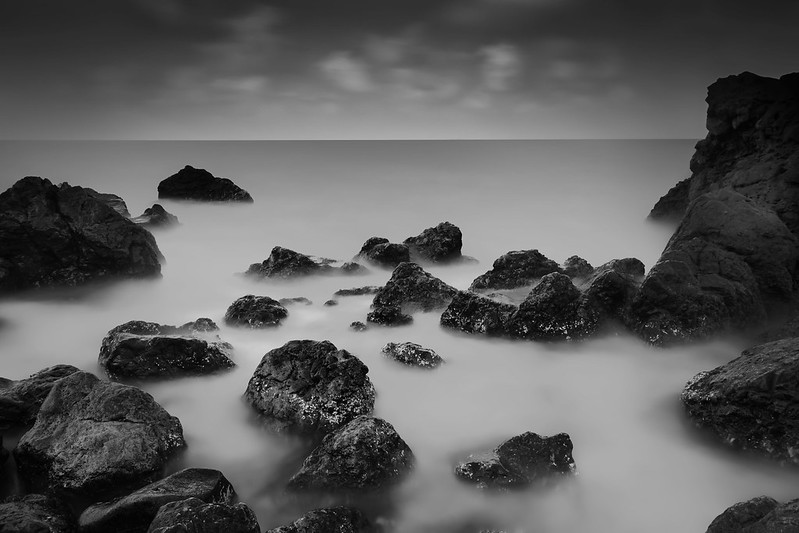Results 1 to 7 of 7
Thread: B&W long exposure
-
9th November 2013, 08:36 PM #1

- Join Date
- Aug 2013
- Location
- Istanbul, Turkey
- Posts
- 293
- Real Name
- Murat Batmaz
B&W long exposure
Last edited by batmura; 9th November 2013 at 10:20 PM.
-
9th November 2013, 09:01 PM #2

- Join Date
- Dec 2011
- Location
- Cobourg, Ontario, Canada
- Posts
- 2,509
- Real Name
- Allan Short
Re: B&W long exposure
Murat I do not know the length of the shot, could it have been longer is get more movement in the sky. I know that is a hard item to judge, I sometimes will time the cloud movement before I take the shot, then decide if the sky is the main feature with the foreground second or the other way around.
Another great shot.
Cheers:
Allan
-
9th November 2013, 09:21 PM #3

- Join Date
- Aug 2013
- Location
- Istanbul, Turkey
- Posts
- 293
- Real Name
- Murat Batmaz
Re: B&W long exposure
Thanks, Allan. I know what you mean. This is actually a relatively short(er) exposure for me -- 30 seconds. After driving here for an hour, I was disappointed to see the clouds weren't going to show themselves. Therefore, I decided to focus on the foreground rocks filling 2/3 of the frame with the whitened sea and giving the rocks a floating vibe. I have no idea how successful I was.
I was told to go and shoot there again on a really cloudy day, but I don't know if my car would like it given the muddy roads.
-
9th November 2013, 10:30 PM #4

- Join Date
- Aug 2013
- Location
- Istanbul, Turkey
- Posts
- 293
- Real Name
- Murat Batmaz
Re: B&W long exposure
Allan, what do you think of the second image?
-
9th November 2013, 10:33 PM #5

- Join Date
- Dec 2008
- Location
- New Zealand
- Posts
- 17,660
- Real Name
- Have a guess :)
Re: B&W long exposure
Hi Murat,
In my opinion, they just don't work that well in B&W.
As an example, here are a couple that I did in colour where I think the colour greatly adds to the image:


With regards to cloud motion - another technique is to capture multiple short-exposure images (eg 30 seconds), and then stack them in Photoshop. For this image (off memory) I think I stacked something like 50 to 100 ...

Hope this helps.
-
9th November 2013, 10:42 PM #6

- Join Date
- Dec 2011
- Location
- Cobourg, Ontario, Canada
- Posts
- 2,509
- Real Name
- Allan Short
Re: B&W long exposure
I like that is happening in the sky on the second image, also great foreground rocks, that is the thing about this time and motion type of photography, to work we need movement. To get this movement we need something to cause it, usually that is wind to move the clouds and to cause waves to help give up the effect we want, however it also works against us at those elements that are not moving have to remain sharp and in focus that is the art. However when it comes together is comes together.
Just love that long exposure stuff.
Cheers:
Allan
-
9th November 2013, 11:36 PM #7
Re: B&W long exposure
I am digging #2; but I like them both. There's just something about #2 as time stands still for the rocks.

 Helpful Posts:
Helpful Posts: 


 Reply With Quote
Reply With Quote
